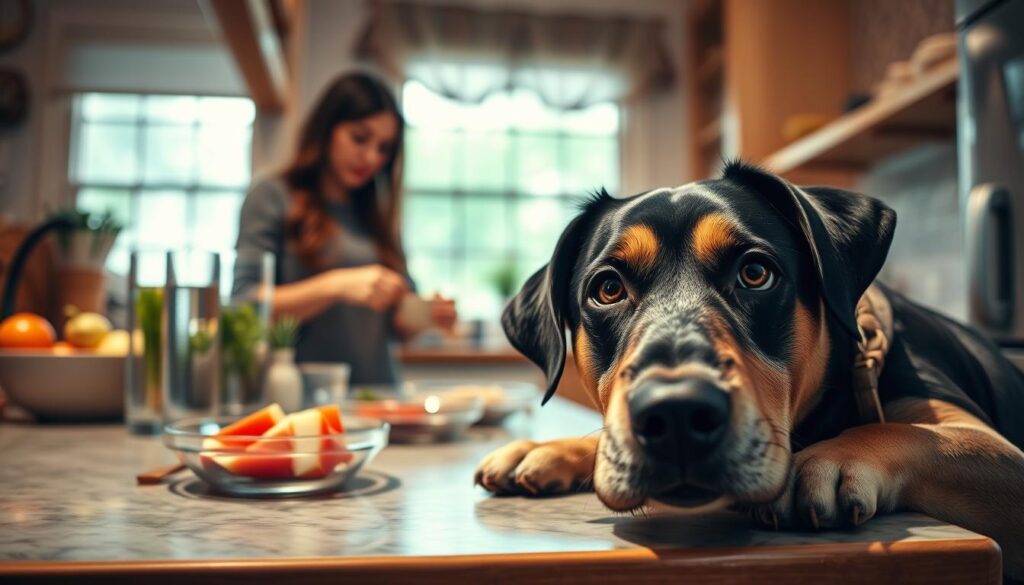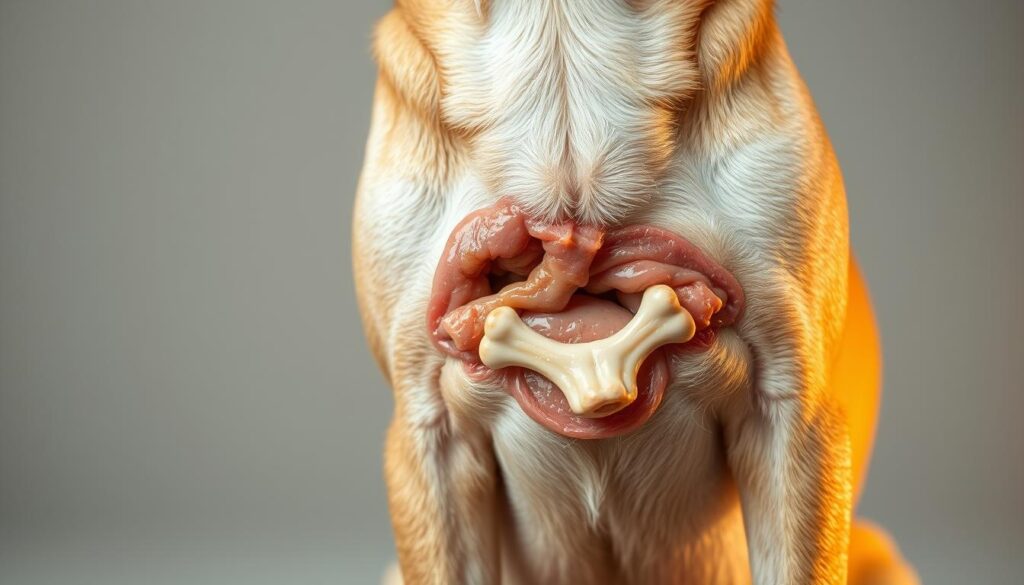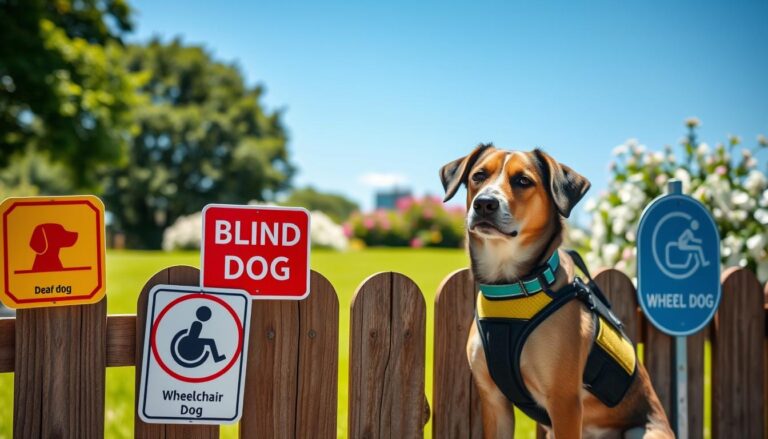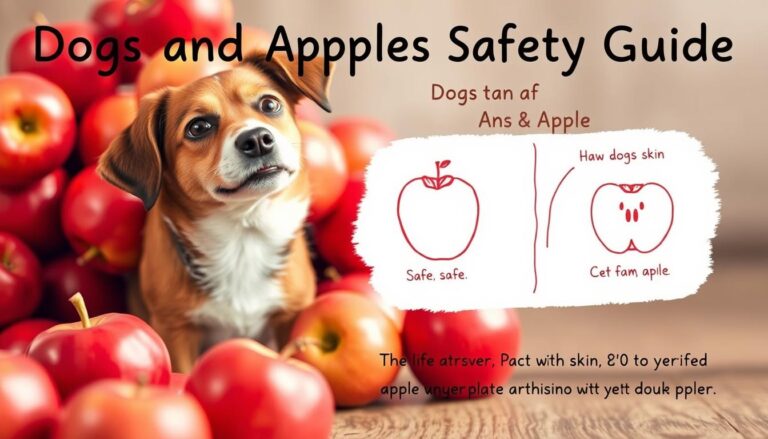My Dog Ate a Chicken Bone? What US Dog Owners Should Do
Your heart races when you realize my dog ate a chicken bone. Panic is normal, but staying calm is key. Discovering that my dog ate a chicken bone doesn’t have to turn into a disaster. Most dog owners face this at least once, and knowing the right steps can save your pet’s life.
Dogs are naturally curious and often eat things they shouldn’t. If my dog ate a chicken bone, it’s important to remain calm and think clearly. Acting quickly and carefully can prevent serious problems and keep your dog safe.
This guide will walk you through exactly what to do if my dog ate a chicken bone. You’ll learn how to respond immediately and monitor your dog over time. Being prepared is the best way to protect your furry friend.
Table of Contents
Understanding the Immediate Risks of Chicken Bone Ingestion
If your dog eats a chicken bone by accident, it can be very dangerous. It’s important for pet owners to know the risks. This way, they can act fast and help their pets.
Chicken bones are not good for dogs because of how they are made. They can cause anything from a little discomfort to a serious emergency.
Signs of Choking and Emergency Situations
Here are the signs your dog might be choking on a chicken bone:
- Excessive drooling
- Pawing at the mouth
- Gagging or retching
- Difficulty breathing
- Panic or distress
Types of Complications from Bone Ingestion
| Complication Type | Potential Consequences | Severity |
|---|---|---|
| Intestinal Blockage | Digestive tract obstruction | High |
| Internal Puncture | Damage to digestive tract | Critical |
| Dental Injury | Tooth fractures | Moderate |
Initial Assessment Steps
If you think your dog ate a chicken bone, here’s what to do first:
- Stay calm and check your dog’s condition
- Look for any breathing problems
- Don’t try to take out the bone yourself
- Call your vet right away
Acting quickly can stop serious problems and might even save your dog’s life.
My Dog Ate a Chicken Bone: First Response Actions
When my dog ate a chicken bone, it’s important to stay calm. Panicking can lead to mistakes that may harm your pet. The first step is to know what actions to take immediately to keep your dog safe.
Your main goal is to stop any more problems from the bone. Here are the first steps to take:
- Do not try to make your dog vomit
- Take away any bones your dog might find
- Look for signs that your dog is upset
- Call your vet right away
Watching your dog closely is key. Look out for these important signs:
| Symptom | Potential Severity |
|---|---|
| Excessive drooling | Possible throat irritation |
| Difficulty swallowing | High risk of obstruction |
| Vomiting or retching | Potential internal damage |
Getting help from a vet is crucial when your dog eats a chicken bone. Don’t just follow online advice or home remedies. Your vet can give you the best advice for your dog’s health and the bone type.
Quick professional help can stop serious health problems for your pet.
Raw vs Cooked Chicken Bones: What’s the Difference?
Knowing the difference between raw and cooked chicken bones is key to keeping your dog safe. Dogs have special digestive systems that handle bones in different ways. It’s important for pet owners to know which bones are safe for their pets.
Cooked chicken bones are much riskier for dogs. Cooking makes bones brittle and likely to splinter. These sharp pieces can cause serious harm when a dog tries to digest them.
Raw Bones: A Natural Approach
Raw chicken bones are safer for dogs to eat. Their digestive systems are made to handle raw meat and bones better.
- Raw bones stay softer and more flexible
- Less likely to break into sharp pieces
- Offer natural nutritional benefits
Risks of Cooked Bone Consumption
Cooked bones are a different story for dogs. Cooking dries out bones, making them very fragile. This increases the risk of:
- Internal punctures
- Choking hazards
- Digestive tract blockages
“Prevention is always better than cure when it comes to your dog’s safety with bones.” – Veterinary Nutrition Expert
Even if some dogs eat cooked chicken bones without problems, the risks are still too high. Always talk to your vet about what’s best for your dog’s diet.
Critical Do’s and Don’ts After Bone Ingestion
If your dog ate a chicken bone, act fast and carefully. Knowing what to do can stop health problems and keep your pet safe.
Handling a dog eating a chicken bone needs a smart plan. Here are key steps to take:
- Remain calm and assess the situation carefully
- Do not induce vomiting without veterinary guidance
- Prevent your dog from eating additional bones
- Watch for signs of distress or discomfort
Here are important actions for when your dog eats a chicken bone:
- Check your dog’s mouth for bone fragments
- Offer soft food to help cushion potential sharp edges
- Limit physical activity to reduce internal movement
- Prepare to contact your veterinarian
Things to avoid when your dog eats a chicken bone:
- Never force-feed anything
- Avoid giving pain medications without professional advice
- Do not ignore potential warning signs
- Refrain from assuming everything is okay
Being watchful can greatly help your dog’s recovery. Keep a close eye on your pet for the next 24-48 hours. This is crucial to spot any issues early.
Monitoring Your Dog’s Behavior Post-Ingestion
If your dog ate a chicken bone, watching them closely is key. The first 24 hours are especially important. They help figure out if any big problems have started.
Knowing what to look for can help catch issues early. Your watchful eye during this time can greatly improve your dog’s health.
Critical Observation Timeframe
Keep an eye on a few important things:
- Changes in appetite
- Energy levels
- Bathroom habits
- Overall behavior
Warning Signs to Watch
Some symptoms need vet help right away:
- Persistent vomiting
- Bloody stool
- Extreme lethargy
- Abdominal pain or swelling
- Difficulty breathing
Normal vs. Abnormal Reactions
Not every reaction is a big deal. Some mild signs might be okay, but others could mean serious harm. If you’re unsure, always call your vet.
Remember: When in doubt, always consult a professional.
Dietary Recommendations During the Monitoring Period

If your dog has eaten a chicken bone, it’s important to change their diet. This helps their digestive system deal with any bone pieces. It’s a key part of safe treatment.
Feeding your dog a bland diet is a good idea. It supports their digestion and helps figure out if they can safely digest chicken bones. Your goal is to make their nutrition gentle and avoid any problems.
- Offer soft, easily digestible foods
- Avoid regular kibble for 24-48 hours
- Provide small, frequent meals
Here are some foods you can give your dog during this time:
| Food Type | Portion Size | Frequency |
|---|---|---|
| Boiled chicken | Small portions | 2-3 times daily |
| White rice | 1/4 to 1/2 cup | With each meal |
| Canned plain pumpkin | 1-2 tablespoons | Once daily |
Soft bread can help protect your dog’s stomach from bone fragments. Keep a close eye on your pet. If you see any signs of trouble, call your vet right away.
When to Seek Immediate Veterinary Care
Knowing when to rush your dog to an emergency vet for dog bone ingestion is crucial. It can save your pet’s life. Some situations need immediate help to prevent serious health problems.
Critical Emergency Symptoms
Your dog’s health can quickly get worse after swallowing a chicken bone. Look out for these urgent symptoms that mean you need to call a vet right away:
- Persistent vomiting or retching
- Excessive drooling or unusual panting
- Visible distress and restlessness
- Sudden lethargy or reluctance to move
- Complete loss of appetite
- Repeated stretching or abnormal body positioning
- Whining or crying when abdomen is touched
- Rectal bleeding or difficulty defecating
Professional Treatment Options
Vets have many ways to handle bone-related emergencies:
| Treatment Method | Purpose |
|---|---|
| X-ray Imaging | Locate bone fragments and assess potential internal damage |
| Endoscopic Removal | Extract bone pieces without invasive surgery |
| Surgical Intervention | Remove bone fragments or repair intestinal injuries |
| Supportive Care | Manage pain, prevent infection, and support recovery |
Remember, quick action can prevent serious health risks for your furry friend.
Never attempt to induce vomiting or treat your dog without professional veterinary guidance. Each situation is unique. Your vet can give the best care for your dog’s specific needs.
The Digestive Process: How Dogs Process Bones
Dogs have a special digestive system for eating bones. They are natural meat-eaters with strong stomach acids. These acids help break down proteins and bones.
When a dog eats a chicken bone, their body starts working right away. The main worry for pet owners is if dogs can safely eat chicken bones. Stomach acid helps dissolve small bone pieces in 24-48 hours.
Not all bones are created equal. How well a dog can digest a bone depends on several things:
- Size of the bone fragment
- Cooking status of the bone
- Individual dog’s digestive health
- Dog’s size and age
Is chicken bone dangerous for dogs? It’s not a simple yes or no. Raw bones are easier for dogs to digest than cooked bones. Cooked bones can splinter and hurt your dog’s insides.
Your dog’s body has strong enzymes and acids to break down bones. Small, soft bones usually pass through without problems. But large or sharp pieces can be very dangerous and need vet help right away.
Always watch your dog after they eat bones and look for signs of trouble or pain.
Long-term Complications and Their Prevention

Chicken bone splinters in dogs can lead to serious long-term health issues. It’s important to know these risks to keep your dog healthy.
Is chicken bone dangerous for dogs? Yes, it can cause chronic health problems.
- Internal tissue damage from sharp bone fragments
- Recurring digestive system inflammation
- Potential surgical interventions
- Chronic digestive tract scarring
Dogs that keep getting chicken bone splinters may face ongoing health issues. These can include:
| Complication | Potential Long-term Impact |
|---|---|
| Gastrointestinal Scarring | Reduced digestive efficiency |
| Chronic Inflammation | Weakened immune response |
| Intestinal Microbiome Disruption | Nutritional absorption challenges |
To avoid these problems, take action early. Regular vet visits, watching what your dog eats, and acting fast if they swallow a bone can help a lot.
Prevention is always more effective than treatment when it comes to your dog’s health.
Being alert and quick can save your dog from serious health issues related to chicken bones.
Comparing Chicken Bones to Other Types of Bones
Not all bones are safe for dogs. Knowing the differences between chicken bones and others can help keep your dog safe.
Is chicken bone dangerous for dogs? It depends on several things. Chicken bones are lighter and more fragile than others. This affects how dogs can digest them.
Beef and Pork Bone Risks
Beef and pork bones are riskier for dogs:
- Denser structure increases choking hazards
- Higher likelihood of splintering
- Greater potential for intestinal blockages
- More challenging for dogs to break down
“The harder the bone, the greater the risk for your canine companion.” – Veterinary Nutrition Experts
Safe Bone Alternatives
Here are safer options for your dog:
- Specially designed dental chew toys
- Rubber chew toys
- Veterinarian-approved synthetic bones
- Edible dental treats
Chicken bones might be safer than beef or pork bones. Still, always check with your vet for the best chew options for your dog.
Prevention Strategies for Future Incidents
It’s important to know that chicken bones are harmful to dogs. By creating a safe space, you can lower the chance of your dog eating dangerous bones.
To keep your dog safe, you need to take several steps. These steps can help avoid accidents with chicken bones.
- Secure food preparation areas during meal times
- Use closed trash containers with secure lids
- Train dogs to stay away from human food zones
- Supervise pets during meal preparation and cleanup
Prevention is the best way to handle if your dog eats a chicken bone. Set clear rules and boundaries about food.
| Prevention Strategy | Action Steps |
|---|---|
| Kitchen Management | Keep counters clear, use baby gates, store bones immediately |
| Training | Teach “leave it” command, reward alternative behaviors |
| Waste Disposal | Use lockable trash cans, dispose of bones in sealed containers |
Teaching everyone about the dangers of chicken bones for dogs is crucial. Consistent approach and vigilance are key to preventing potential health hazards.
Remember: A few moments of prevention can save you from potential veterinary emergencies.
Conclusion
If my dog ate a chicken bone, it’s important to stay calm and understand the risks. Acting quickly can prevent serious problems and keep your pet safe. Knowing the right steps when my dog ate a chicken bone gives peace of mind and helps protect your furry friend.
Prevention is the best strategy. Keep chicken bones and other harmful foods out of reach, and teach everyone in your home about potential dangers.
Immediate action and consulting your veterinarian are crucial. Every dog is different, so trust your instincts, respond fast, and prioritize your dog’s health and safety.







